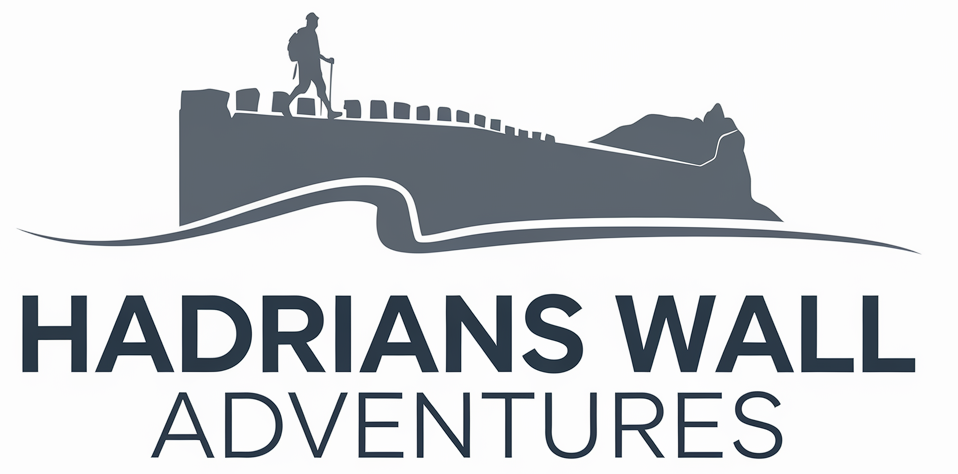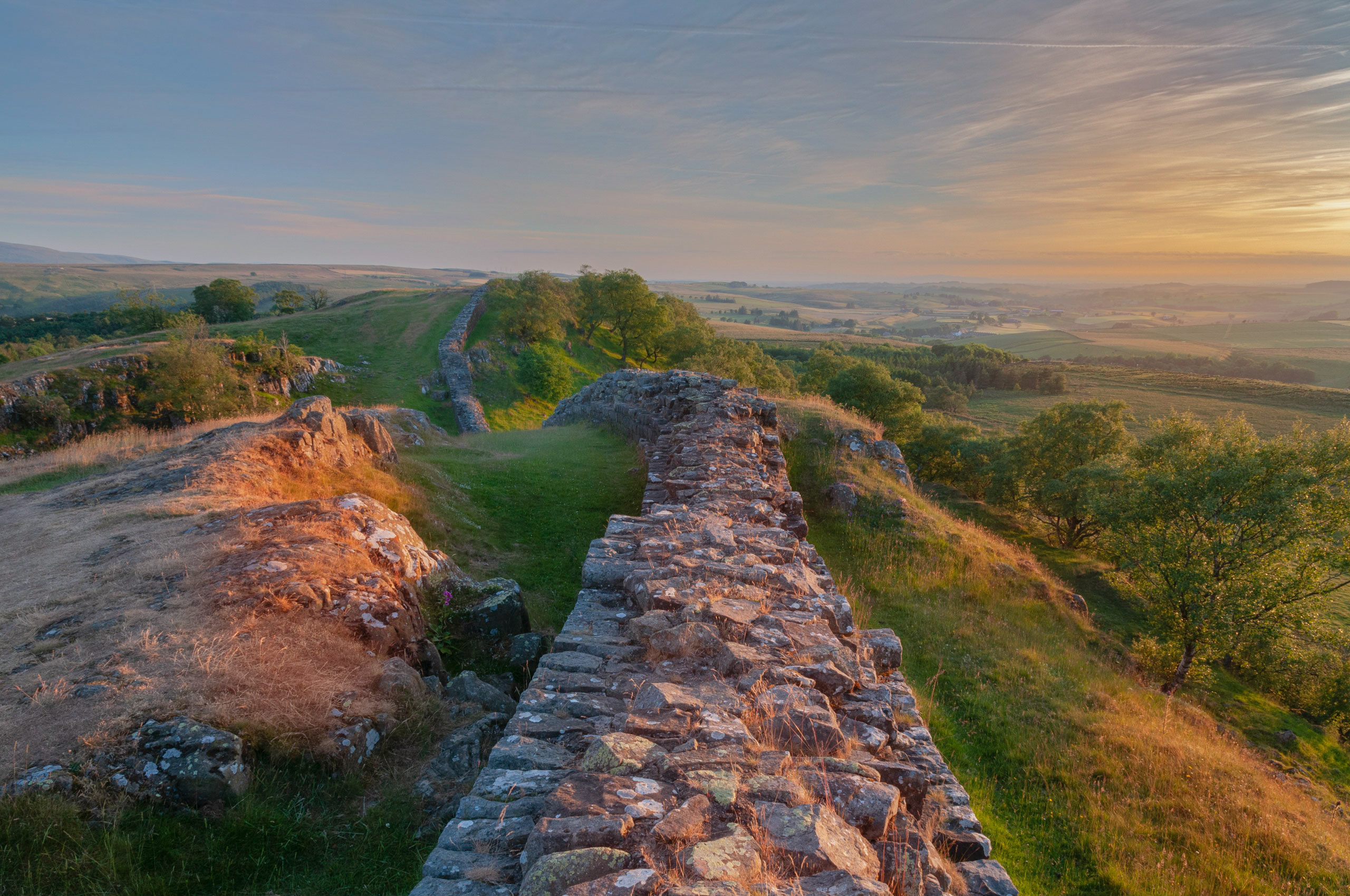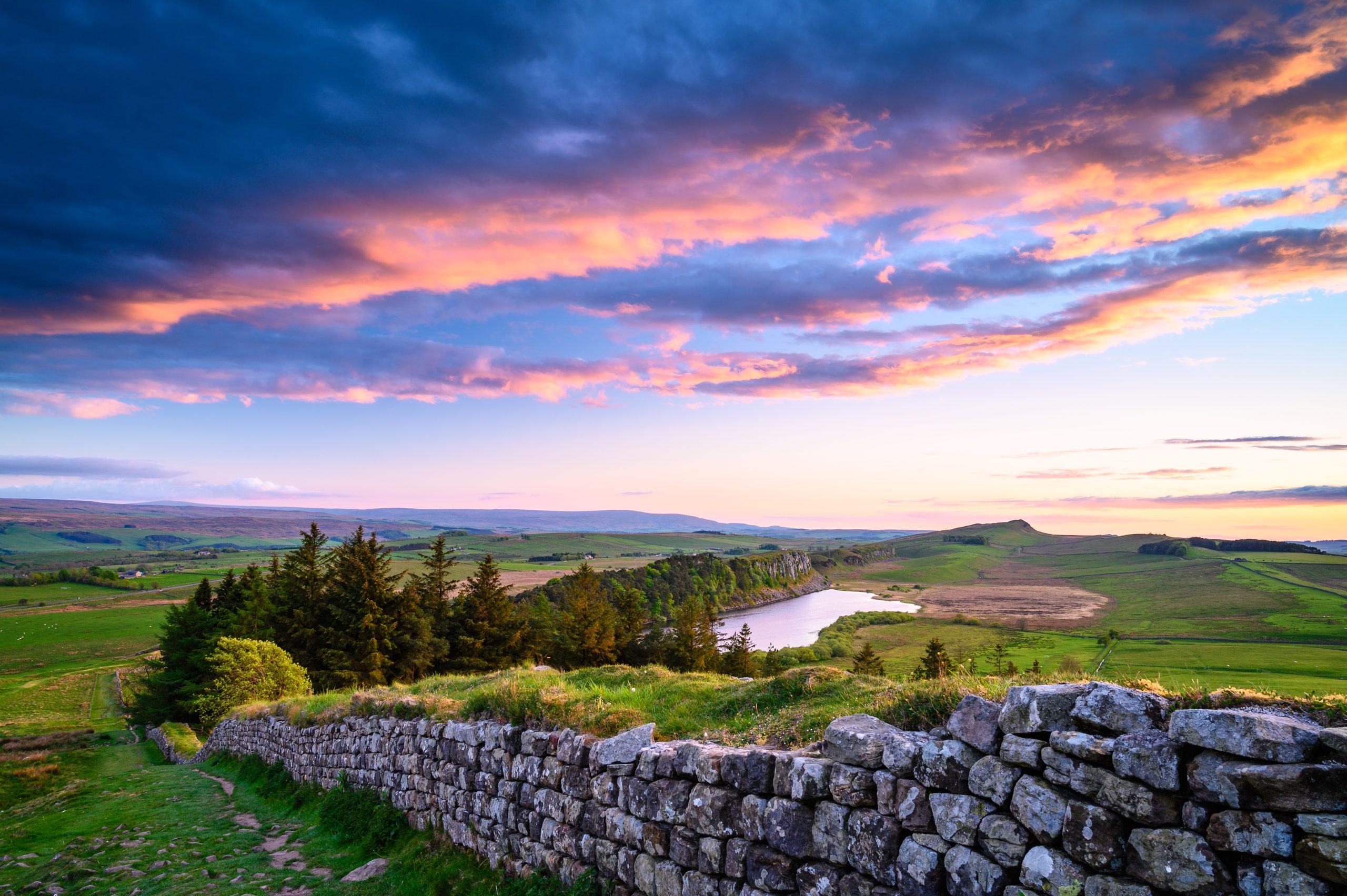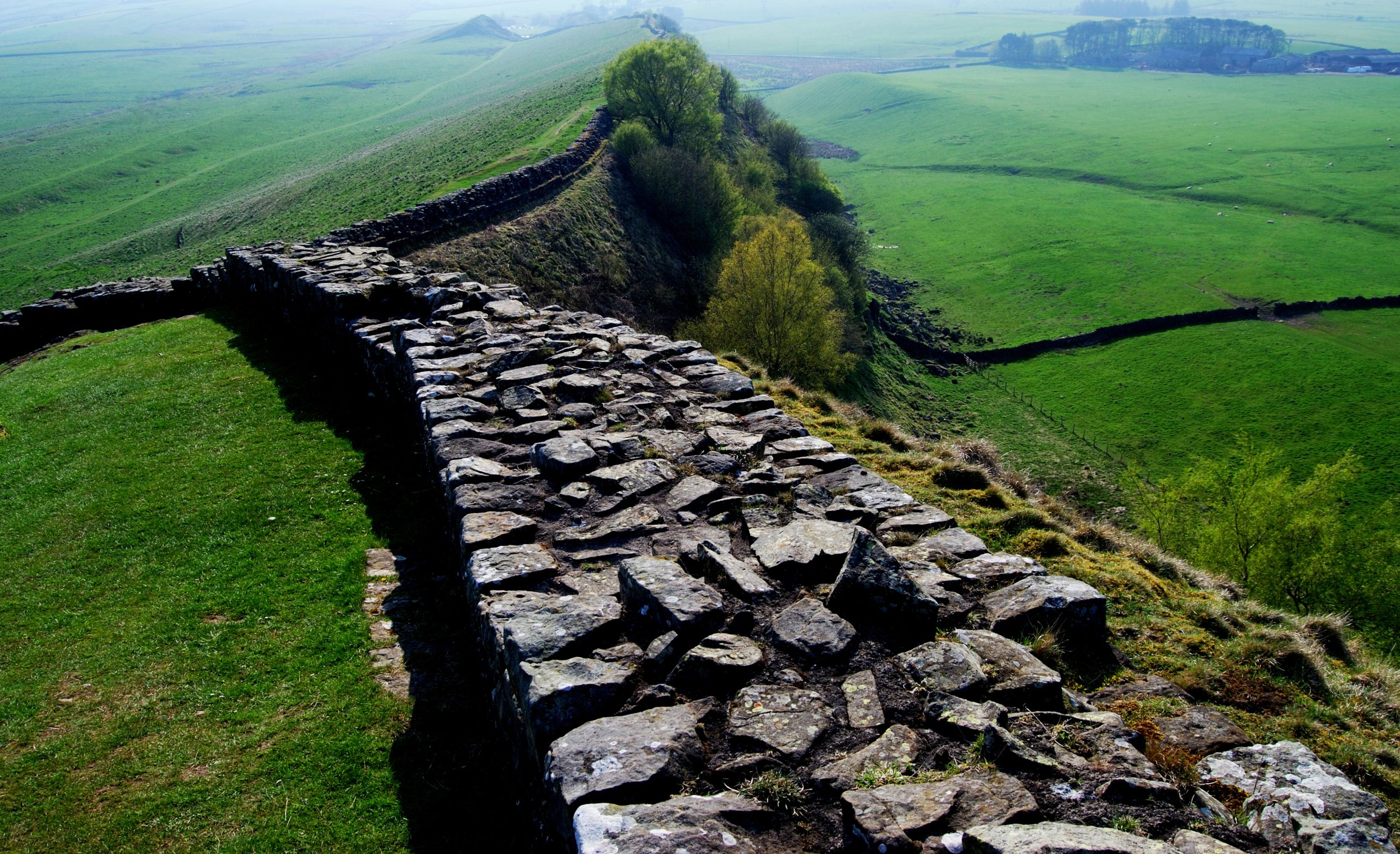Chesters occupies a strategic position beside the River North Tyne, where the Romans built a substantial bridge to carry Hadrian’s Wall across the water. This fort specialized in cavalry rather than infantry, and its layout reflects the different requirements of housing soldiers and their horses.
The History
Built around AD 124, Chesters housed approximately 500 cavalry soldiers from the Second Asturian Cavalry, originally recruited from northern Spain. Cavalry units required more space than infantry—each trooper needed accommodation for himself and his horse, plus room for tack, weapons, and equipment.
The fort’s Latin name, Cilurnum, possibly derives from a Celtic word meaning “cauldron-shaped basin,” perhaps referring to the bend in the river at this point. The location provided crucial control over a major river crossing, and the bridge’s substantial stone foundations remain visible in the riverbed when water levels drop.
Unlike many Hadrian’s Wall forts that were abandoned after Roman withdrawal, Chesters saw continued occupation into the medieval period. A tower house built in the 13th century incorporated Roman stonework, demonstrating how later inhabitants valued and reused ancient materials.
The site came into the Clayton family’s hands in the 19th century. John Clayton, a prominent Newcastle lawyer and antiquarian, purchased Chesters and several other wall forts to preserve them. He conducted early archaeological excavations and built the distinctive Victorian museum that still houses the site’s collection.
Why Visit Chesters
Chesters offers something unique among Hadrian’s Wall forts—Britain’s best-preserved Roman military bathhouse. The bathhouse stands beside the river, outside the fort’s defensive walls, and walking through its remarkably intact rooms demonstrates Roman bathing culture and engineering skill.
The bathhouse is Chesters’ star attraction:
- The changing room (apodyterium) still has niches in the walls where bathers left their clothes
- Cold plunge pools provided the first shock to the bathing routine
- Warm rooms (tepidarium) allowed gradual temperature adjustment
- Hot rooms (caldarium) used underfloor heating through the hypocaust system
- The furnace area shows where slaves tended fires that heated the rooms
You can see the hypocaust system clearly—the floor was raised on small brick pillars, allowing hot air from furnaces to circulate underneath. Hot air also rose through hollow wall tiles, heating the entire room. The engineering is sophisticated and effective.
The fort itself covers 5.5 acres and its layout is remarkably clear:
- The headquarters building (principia) was the administrative heart
- The commanding officer’s house was spacious and comfortable
- Barrack blocks were larger than infantry barracks to accommodate cavalry equipment
- Four main gates punctuated the defensive walls
- Granaries stored food supplies for men and horses
The east gate is particularly well-preserved, showing the double portal design and guard chambers. Standing in this gateway, you can imagine cavalry squadrons riding out on patrol, horses’ hooves clattering on Roman paving stones.
The bridge abutment at the riverbank shows the scale of Roman engineering. The bridge carried the wall across the river and was wide enough for wheeled traffic. When river levels are low, you can sometimes spot foundation stones in the water.
The museum houses an outstanding collection of Roman sculpture and inscribed stones:
- Altars dedicated to various deities show religious diversity
- Tombstones commemorate individual soldiers, naming their units and origins
- Relief sculptures depict gods, goddesses, and mythological scenes
- Architectural fragments demonstrate building decoration standards
- Small finds include pottery, coins, and personal items
The museum building itself is Victorian Gothic architecture, reflecting 19th-century romanticism about the classical world. It creates an interesting contrast with the Roman remains outside.
Time Required
Allow two hours minimum for Chesters. This gives time to explore the fort layout, spend at least 45 minutes in the bathhouse understanding its various rooms, and visit the museum properly. The site is managed by English Heritage and charges admission unless you have membership.
If you’re particularly interested in Roman architecture or military history, three hours provides time for detailed exploration and photography. The riverside setting is pleasant, and many visitors enjoy simply sitting by the water after exploring the ruins, absorbing the atmosphere of this ancient site.
Location on the Trail
Chesters lies directly beside the Hadrian’s Wall Path at Chollerford, roughly 20 miles from the trail’s eastern end at Wallsend. This makes it one of the first major Roman sites that walkers encounter when traveling west to east, or one of the last when walking east to west.
From the east, you’ll have walked through several days of relatively gentle terrain through Tyneside and Northumberland’s rolling farmland. Chesters marks the beginning of the more dramatic central section, though the landscape here remains pastoral and peaceful.
From the west, Chesters comes after you’ve descended from the high crags and spectacular wall sections around Housesteads and Steel Rigg. The transition from dramatic uplands to the gentler Tyne valley creates an interesting contrast in landscape character.
The fort entrance is mere metres from the trail, making access very straightforward. You simply step off the path and you’re there. This convenience means even walkers on tight schedules can visit without significant detour or time penalty.
Practical Tips for Walkers
The terrain at Chesters is relatively level compared to sites along the central crags. This makes it more accessible for anyone who’s struggled with the steep sections around Steel Rigg or Housesteads. The paths are well-maintained with good disabled access to many areas.
Chollerford village sits immediately adjacent to Chesters. The village has accommodation options, a pub (The George Hotel), and a tea room. Many walking holiday itineraries include an overnight stop here, allowing a relaxed afternoon visit to Chesters after a morning walk.
If you’re day-walking from accommodation in Hexham or Humshaugh, Chesters makes an excellent turnaround point or rest stop. The museum provides shelter in poor weather, and benches around the site offer good lunch-stop options with river views.
The site opens year-round but has reduced hours during winter months (November to March). Summer visits (April to September) provide longest opening hours and best weather chances. The riverside location means Chesters can be particularly pleasant on warm days, with tree shade and water proximity.
Facilities include toilets and a small gift shop but no café. Bring your own refreshments or plan to stop in Chollerford village. Water refills are possible at the visitor facilities.
The bathhouse can be slippery when wet, particularly the stone floors in the various rooms. Take care moving through the building, especially if you’re wearing walking boots with worn treads after several days on the trail.
Photography at Chesters is excellent. The bathhouse, with its intact walls and visible hypocaust, photographs particularly well. The museum’s skylights provide good natural light for photographing the sculpture collection, and flash photography is permitted for personal use.
Audio guides are available and highly recommended. The bathhouse’s various rooms and their functions become much clearer with expert explanation, and the audio guide helps you understand what you’re seeing in the fort layout.
Many walkers visit Chesters late afternoon after a day’s walking. This timing works well—the site is often quieter than morning visits, and late afternoon light can be beautiful along the river. Just ensure you arrive with enough time before closing (usually last admission an hour before closing time).
The riverside path near Chesters provides pleasant additional walking if you want to stretch your legs further. A public footpath follows the North Tyne both upstream and downstream from the fort, offering peaceful riverside strolling through attractive countryside.





